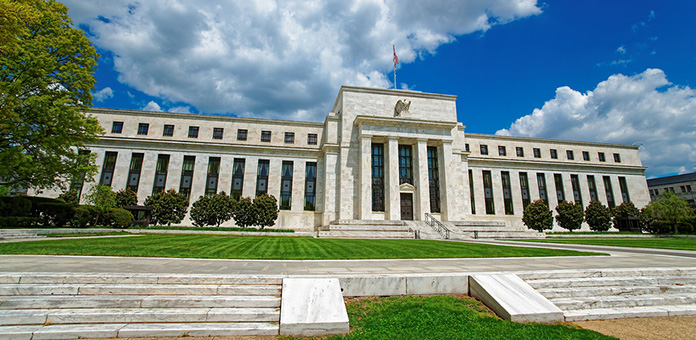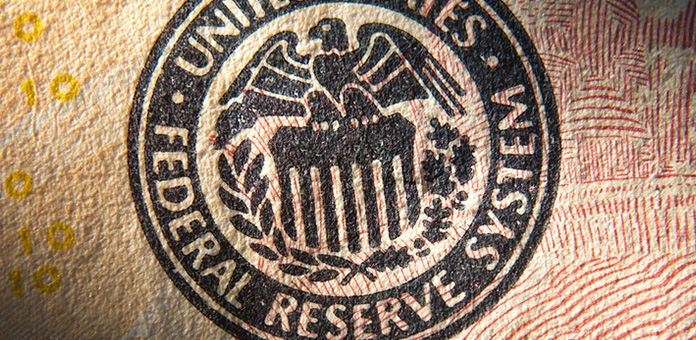
The Federal Reserve, or “the Fed” as it is more commonly known, is the central bank system of the U.S. Nearly every country has a central bank, which started appearing in Europe in the 18th century and became common in the 19th century. 1 2 Congress created the U.S. Fed with the Federal Reserve Act of 1913 and has amended the act several times since its inception. 3
What Is the Structure of the Federal Reserve?
- Board of Governors (BOG): The BOG is the federal government agency located in Washington that manages the Fed. The BOG is made up of seven presidential appointees serving 14-year terms who must be confirmed by the Senate. 4 The board is led by a chairman and vice chairman who are appointed by the President and confirmed by the Senate for four-year terms. Janet Yellen is the current chairman, and Stanley Fischer is the current vice chairman.
- Federal Reserve Banks: The Reserve Banks are organized in a system of 12 regional banks located in 12 major cities. 5 These regional banks operate under the supervision of the Board of Governors and conduct most of the actual operations of the Fed. They have an intermediate legal status, as they have aspects of both public and private organizations. 6
- Federal Open Market Committee (FOMC): The FOMC is a 12-person committee that sets monetary policy. 7 The committee is made up of the seven BOG members, the president of the New York Fed, and presidents from four of the remaining 11 Reserve Banks serving one-year terms on a rotating basis. The FOMC oversees “open market operations,” which is the main policy tool of the Fed.
Why Was the Federal Reserve Created?
The Fed was created in response to numerous crises in the financial markets leading up to the 1913 act. While the National Banking Act of 1863 8 created a network of national banks and established a single U.S. currency, bank panics were common throughout the late 1800s and into the early 1900s. Congress responded with the 1913 Act to provide markets with more stability and confidence in the banking system.
What Does the Federal Reserve Do?

The Federal Reserve has five general functions:
1. Conducting Monetary Policy
The FOMC’s open market operations consist of buying or selling U.S. Treasury-issued securities in the Federal Funds market to control interest rates. In addition, by establishing the Fed in the 1913 Act, Congress delegated its monopoly over the printing of U.S. currency to the Fed, and so the Fed may decide to print more money or take some out of circulation as part of monetary policy as well. While the Fed has other tools available to it for monetary policy, these are the primary ones used to implement policy under ordinary circumstances. 9 10
2. Promoting Financial System Stability
The Fed is charged with managing the risks of the financial system as a whole. Systemic risk—risk that puts our entire financial system in jeopardy—is an important topic for the Fed.
3. Supervising and Regulating Financial Institutions
In addition to managing the risk of the entire system, the Fed also must monitor the health of individual banks, particularly those that may present a systemic risk.
4. Fostering the Payment and Settlement System
The Fed plays an important role in the system of payments used by U.S. banks by holding bank deposits, enabling electronic payments, distributing currency and coin, and providing settlement services.
5. Consumer Protection
The Fed also monitors conditions and practices in the markets for consumer finances for fairness and transparency.
Why Does the Federal Reserve Alter Monetary Policy?
The Fed alters monetary policy whenever the FOMC decides that the balance between interest rates, inflation, and employment is out of line. At FOMC meetings, the committee reviews economic conditions in each of the 12 regions in a report known as the Beige Book, and committee members discuss at length each policy decision to be made. 11 Finally, Congress reviews the FOMC decisions on monetary policy in a report submitted twice per year.
What Is the Relationship Between the Fed and Gold Prices?
Many investors believe that gold prices decrease when interest rates rise and increase when rates fall, but some studies suggest that the inverse is true 12. In actual fact, many factors influence gold prices, and while the Fed does not specifically target gold prices as part of monetary policy, general market conditions of course have an effect on gold prices overall.

